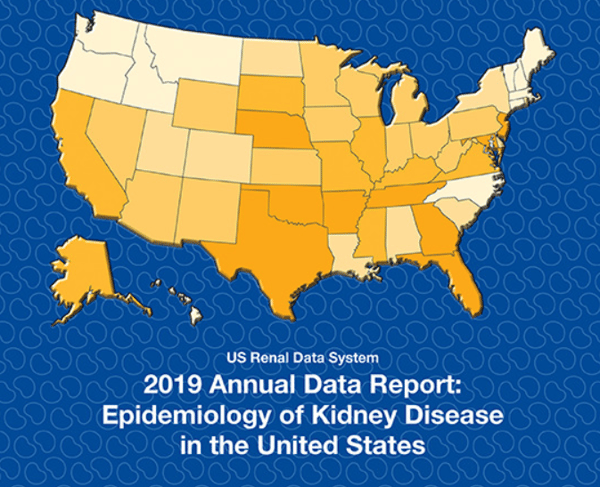According to the U.S. Renal Data System 2019 Annual Report, 124,500 people were newly diagnosed with End Stage Renal Disease in 2017, of which 120,834 began dialysis. About 88% of newly diagnosed patients begin care in a dialysis center at a cost to Medicare of $92,000 per patient. In-home dialysis can improve care, enhance outcomes and lower costs. Advanced technology, clinical expertise and complex care management can uncover the ESRD patients who could benefit most.

For ESRD patients, in-center dialysis has been the paradigm for dialysis management.. Of the number of newly diagnosed ESRD patients, 33% may have received little to no pre-ESRD nephrology care, and often “crash” into dialysis when renal failure drives them to the ER. For the majority of these patients, who are often unaware of their disease, overwhelmed by their diagnosis, and unaware of their options, in-center dialysis became the only option and today, continues to be the modality of choice.
But, it doesn’t have to be this way, and frankly it won’t.
Home dialysis: better outcomes, patient experience and costs
In the U.S. home dialysis remains an underused treatment modality for ESRD patients. Despite research showing that home dialysis is as safe and effective as in-center treatment, only about 12% of ESRD dialysis patients are treated at home.
For patients, scheduling dialysis treatments around their lives rather than when a chair is available at the dialysis center is a major improvement with in-home dialysis. Because home dialysis allows more frequent and slower treatment (for instance some patients dialyze overnight versus four hours in a center) patients feel better, require fewer medications, have fewer dietary restrictions and retain kidney function longer. And, important right now, in-home dialysis keeps vulnerable ESRD patients at home, continuing to safely access their life-sustaining treatment.
Home dialysis is also a more cost-effective option. Nurse involvement is limited to remote monitoring to troubleshoot issues should they arise. The frequency with which patients can self-administer their treatment eliminates the in-center treatment “gap” days that are associated with increased hospitalizations, which account for approximately 40% of the cost to Medicare of caring for ESRD patients.
Disrupting the Diagnosis-to-Dialysis-Center Pipeline
For patients who are in otherwise good health, not prone to infection, do not have a pre-existing medical condition that would preclude them from consideration, home dialysis can be a life altering and cost saving alternative to in-center dialysis treatment.
The key to disrupting the paradigm of the ESRD diagnosis to dialysis in-center trajectory lies in the ability to identify the ideal candidates for in-home dialysis before they need renal replacement therapy and proactively transition them to in-home treatment. Kidney health management programs can help.
Kidney Health Management (KHM) programs use big data, AI, machine learning and predictive analytics leveraged with clinical expertise and complex care management to proactively identify patients whose medical profiles match that of other ESRD patients who have successfully transitioned to in-home dialysis treatment. Actionable and clinically proven information is provided to the healthcare provider to determine the patient’s appropriateness and readiness for in-home dialysis.
From there, KHM deploys its patient-centric, provider supporting capabilities to empower patients and providers with the information and services needed to make in-home dialysis a success, specifically to:
- Identify care gaps and take steps to proactively connect the patient to the care and support services they need to make home dialysis a success well in advance of initiating dialysis;
- Engage the patient in the decision to dialyze at home, provide them with the information they need to make an informed choice;
- Assess telehealth readiness and capability for a smooth glide path to therapy initiation and ongoing provider communication, support, and education.
- Support patients throughout the transition and troubleshoot issues that may arise. Ensure patients are adapting well, safely dialyzing at home and have the services they need to successfully and confidently continue their dialysis treatment at home.
Healthmap Solutions works with a number of large health plans to increase the use of in-home dialysis treatment as appropriate for ESRD patients. Our Kidney Health Management program has a 40% (and growing) success rate in transitioning patients to home dialysis, greatly benefiting the patient, provider and health plan. For more information visit healthmapsolutions.com
To stay current on issues and breaking news related to kidney health management and population health management, follow us on LinkedIn, Facebook and @healthmapcare, and sign up for direct alerts from Healthmap Solutions.
